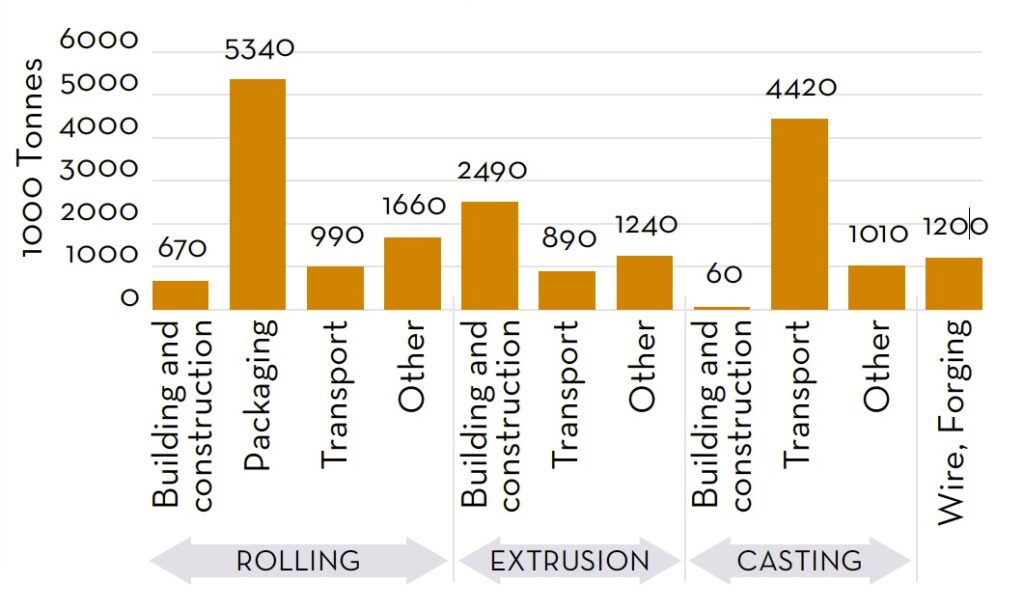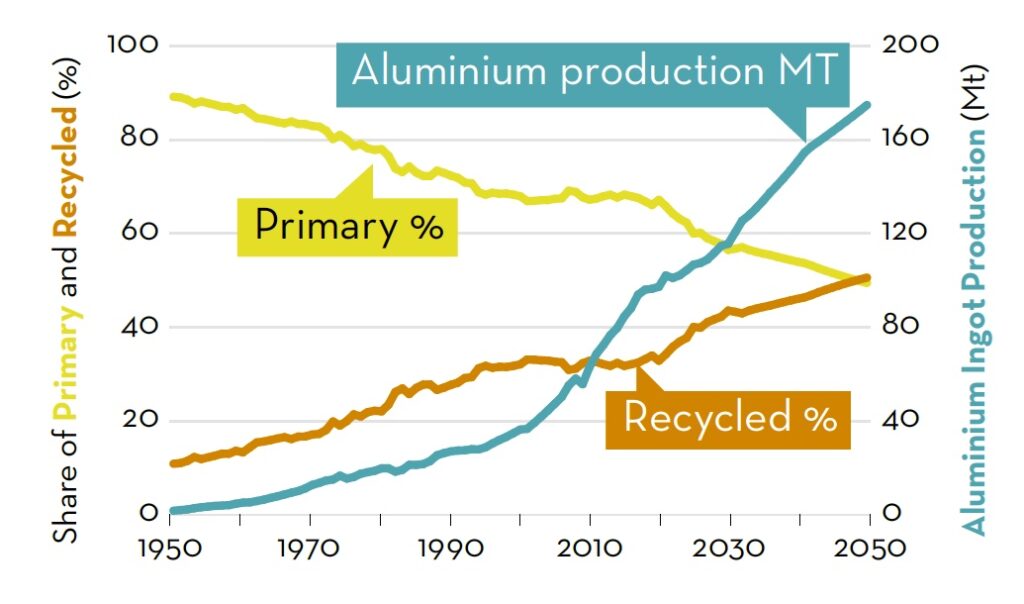The International Aluminium Institute (IAI) released an update of its Material Flow Model, which reveals new data on global scrap usage within the aluminum industry.
The new data shows a record 20 million tonnes of post-consumer scrap intake in 2019 — representing about 60% of total scrap intake. This increased usage of post-consumer scrap avoids 300 million tonnes of greenhouse gas emissions since the recycled metal reduces demand for primary aluminum. The post-consumer scrap intake came from three main sources – packaging, vehicles, and building and construction.


came from used packaging (rolled products). (Source: IAI.)
“Aluminum demand is expected to increase by about 80% in 2050, and the IAI forecasts that recycled aluminum could meet half of that demand. With ambitious collection targets for used beverage cans and improved recycling technologies for foil, this rate could even be higher,” explained Marlen Bertram, the IAI’s director – Scenarios & Forecasts. “Historical figures indicate that measures to increase the amount of post-consumer aluminum products being put back into production continue to be successful.”

Material Flow Model
Aluminum is one of the most recyclable materials on the planet and the IAI is campaigning to ensure end-of-life products are returned into the aluminum recycling loop — given the economic and environmental value of the metal in the global economy.
Housing a century’s worth of industry data, the IAI’s Material Flow Model provides comprehensive industry data set yet and is published on Alucycle. Built on the aluminum industry’s data from 1962 to 2019 and demand scenarios to 2040, Alucycle presents almost two decades of material flow analysis and modeling. The site is interactive and enables regional analysis of the aluminum chain overtime.
“The IAI can now look back at nearly 70 years of historical data from mining to product, recycling and trade for nine regions and globally,” said Bertram. “The 2021 update includes a complete historical dataset for 2019 as well as 2020 partial dataset.”
The latest IAI update includes two key industry scenarios on all aspects of aluminum production and demand up to 2050. This takes into account the impact of COVID-19 and plays a key data source for IAI’s recently published report on Aluminium Sector Greenhouse Gas Pathways to 2050.
The annual update provides a comprehensive review of the aluminum industry covering primary aluminum production, alumina production, inventories, regional semis shipments and trade of bauxite, alumina, aluminum, semis, final products, and scrap.
